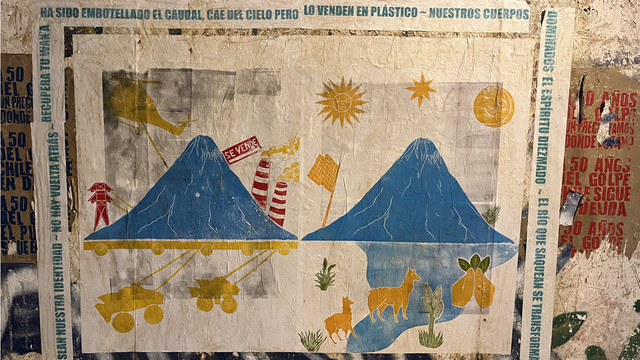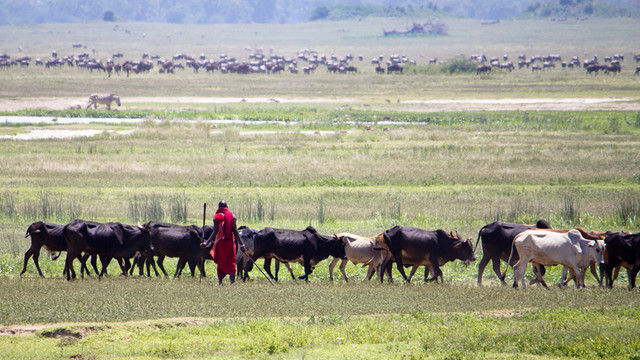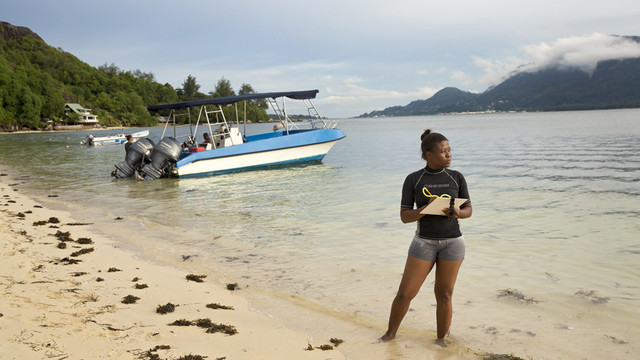Here’s how to propel a green recovery for the poorest
Special drawing rights could give indebted countries the flexibility to take climate action that benefits everyone, discuss IIED's Paul Steele and Shamshad Akhtar, former Minister of Finance for Pakistan.



In 2020, communities in Western Uganda faced a double crisis of COVID-19 and flash floods that caused large-scale destruction (Photo: Climate Centre via Flickr, CC BY-NC 2.0)
The International Monetary Fund (IMF) announced at the recent Climate Adaptation Summit its intention to place climate change at the heart of its work – recognising the natural world and the economy are no longer at odds.
With the growing climate stress and depletion of ecosystems, it is imperative that the renewed efforts are launched to propel a green recovery from the pandemic, preserving nature for future generations and giving it much needed economic value.
As climate scenarios are integrated within economic frameworks, climate vulnerabilities will be more evident across the globe and strain the medium-term economic scenarios. Climate shocks could chop off up to 5% of gross domestic product (GDP) per year by 2030 in some vulnerable countries. This also means debt distress will limit the fiscal space to support an inclusive and effective green recovery post COVID-19.
What could help?
Unlocking the potential of Special Drawing Rights for a green recovery
New Special Drawing Rights (SDRs), which the G7 has approved, could help leverage more financing crucial for low income and developing countries.
There is an estimated US$650 billion as SDRs available from the IMF with provision for shareholder countries to voluntarily reallocate funds where they are needed most, rather than distributing them among themselves leaving less than 4% for poorer countries.
Some in the IMF would be willing to support such re-allocated 'SDRs for green recovery' – for example the more climate-vulnerable a country the larger their reallocation – or by linking SDR reallocations to spending on pro-poor and growth-enhancing climate resilience or biodiversity investments and policies.
These $650 billion SDRs for green recovery would represent 65 times the size of the current Green Climate Fund (GCF) and if judiciously distributed could finance the much-needed climate adaptation and mitigations needs of low-income countries.
Green SDRs are good for equity and efficiency
But while the IMF has recently become vocal on climate action and green recovery, its COVID-19 funding has only financed 16% for ‘greening’ which is less than during the post-2008 financial crisis.
SDR reallocations are an imperative for poor countries given their massive climate liability. Some small island developing states and least developed countries are close to insolvency, experiencing major climate impacts on their economies, with reduced economic growth prospects and increasing debt burden.
Putting aside climate justice, reallocating SDRs to finance green recovery is good for efficiency. Rich countries need a strong incentive to give up their SDR quotas but effective climate action, supporting climate-vulnerable countries to become more resilient, is universally recognised by all countries in the 2015 Paris climate change agreement.
Mitigating climate emissions, often cheaper in developing countries, would also be money well spent for richer countries.
Managing debt for climate and nature outcomes
Reallocated SDRs for green recovery can also provide the liquidity for multilateral debt relief by the IMF, World Bank and Regional Development Banks (RDBs) to climate vulnerable countries. Allowing some SDRs to be leveraged by the World Bank and RDBs, while IMF financing also mainstreams climate change, will maximise climate action.
With a climate-responsive Biden administration in the United States coupled with the European Union’s Green Deal, now is the opportunity to seize the moment for re-allocated SDRs to respond to the climate and nature crisis, reduce debt and ensure an inclusive and sustainable post-COVID-19 recovery.
This blog was originally posted on the Thomson Reuters Foundation website.



